The Best Microsite Examples
- 1. Collaborative Fund: The Bright Future of Car Sharing
- 2. The New York Times Magazine: Walking New York
- 3. Chanel: Inside Chanel
- 4. Matthew Rothenberg: emojitracker
- 5. A Human Project
- 6. Lucidworks: The Data That Lies Beneath
- 7. Halsey: Manic The Album
- 8. OfficeMax: ElfYourself
- 9. American Cycling Association: CommUtah
- 10. NASA: NASA Spacecrafts
What the heck is a microsite and why do you need one?
First, the good news: If you’ve never heard of microsites, you’re not missing out on something that will make or break your entire digital marketing strategy.
Relatively few campaigns actually deploy a microsite or make good use of them. You can be an inbound marketing pro and never lay your hands on a microsite.
Perhaps for this reason, there’s a lot of confusion as to what a microsite actually is.
What Is a Microsite?
A microsite acts as a sub-site centered on a single campaign. It is often a temporary asset that is built for a limited time, either as an individual webpage or a small group of webpages. The microsite includes its own unique content, usually existing on its own domain. However, some live on subdomains. They can be used to target specific buyer personas, enhance awareness efforts, and entice visitors with a specific call to action.
A microsite is a “sub-site” that focuses on a single campaign.
A microsite is not:
- A landing page – that’s a page used to generate leads for a particular offer.
- A small website – it can be small, but that’s not what makes it a microsite.
- A subdomain – but it can have its own subdomain (and usually does).
A microsite is:
- Usually temporary, built around a single, time-limited digital marketing campaign.
- Packed with its own content built around its own consistent themes and keywords.
- Supported by its own social media, video content, email addresses, and interfaces.
They’re handy tools that, even though aren’t necessarily mandatory, can elevate your campaigns.
The Benefits of Microsites
Microsites can be leveraged by businesses to help them accomplish a number of things. They’re built and designed to suit your needs, so they can be as short-term or long-lived as you choose.
Utilize them until you reap as many benefits as you see fit.
You Can Have More Focused or Targeted Content.
With a microsite, you can focus all copy and design on one topic, and that topic can be anything from a new product to an email marketing campaign.
A clear, targeted presentation of a product or service is actually incredibly more valuable to customers who have specific interests. A microsite provides them with the content they’re looking for without a lot of other pages and offers that won’t interest them.
Your Homepage Will Feel Cleaner.
To keep your homepage from becoming overcrowded, congested, or confusing, you can use microsites to feature more specific content in an effort to save space.
In the same sense that microsites provide more focused intent, the same goes for your homepage. Too many details and opportunities on one site can overwhelm a visitor and turn them off from your business.
You can make a home for your company’s details and another for specific campaigns, providing a better sense of organization and cleanliness to your pages.
You Can Test New Ideas.
Developing new marketing strategies and campaigns often require a trial period where you test to see if they’re actually going to be of value to your business.
Microsites are a great way to experiment within your market. You can gauge the effectiveness of your messaging on a much smaller budget than a full scale development project.
Their nature makes it easy for them to stand on their own, separate from your homepage. You’ll be able to identify what’s the most attractive to your target audience in a controlled environment without confusing your customers.
You Can Save Resources on Campaigns.
Say you have a short campaign with a lifespan meant for just a season or an announcement with a short run. Developing a full website for a temporary gig is a serious drain on your time and budget.
Instead, you can use a microsite, which is considerably cheaper and easier to develop. It can be straightforward in its purpose, providing the details it’s meant to, and then removed just as quickly as it was put up.
You’ll Boost Your SEO.
Since a microsite is actually its own website and not just some spin-off landing page, it will have its own unique URL. This is important for a lot of reasons.
First off, a short, memorable URL will make it easier for visitors to find it and access a product or service faster. And, as a happy consequence, your SEO standing will improve also. Creating a keyword-rich domain that will get the attention of search engines will boost your rankings.
Also, since the microsite will have a singular, targeted focus, you’ll have a pretty low bounce rate. That earns you brownie points too.
Just make sure you don’t have any duplicate content on your homesite already.
You Can Empower Your Brand.
It’s not uncommon for a brand to launch a new product or smaller brand underneath its umbrella. Naturally, you’d want the new entity to stand on its own from the parent brand.
A new launch typically means a new, or at least more specific, target market that needs to be reached. Microsites assist by establishing this new brand, product, or service and keeping it separated from unrelated products or details on the homesite.
Even if it’s only a few pages, letting a microsite market on its own can help bolster and empower its subject’s personal brand.
When Do You Need a Microsite?
The truth is, you never need a microsite.
A microsite is a convenient way of making your campaigns efficient in structure and format. It can refresh your brand’s image in your customers’ minds, but there are some situations where it could undermine your SEO efforts. That makes things more complicated in the long run!
A Microsite Is a Good Idea If ...
A microsite is a good idea if you need to showcase an aspect of your brand that isn’t a core focus or that needs further development.
For example, an IT company might start a microsite to help finance firms self-diagnose their information security vulnerabilities. Within that microsite, they might have a selection of specialized training videos and podcasts not available on the main site.
A Microsite Is a Bad Idea If ...
A microsite can be a bad idea if there’s too much overlap between the value your main site offers and your plan for the microsite.
In the example above, a firm that focuses exclusively on IT security assessments wouldn’t want to break out a microsite just to address finance customers. That would be best handled as a content silo with its own set of landing pages in your main site.
10 of the Best Microsite Examples
Microsites are used in a wide variety of ways and across multiple industries. There really aren’t any rules to their purposes, as long as you’re executing them properly.
Here are some of the coolest (or oddest) microsites in existence right now:
1. Collaborative Fund: The Bright Future of Car Sharing
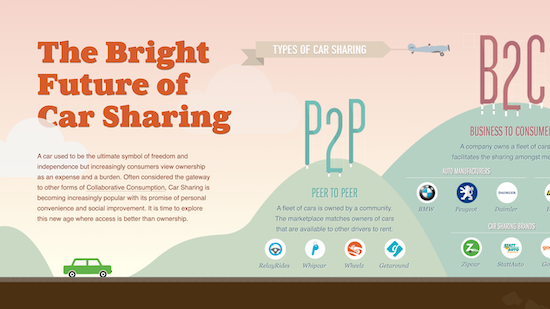
With a fun side-scrolling layout, this microsite highlights the growth of car sharing and its impact on the planet. You can hover over sections and graphics to get info snippets in a fun and engaging form of interactivity, keeping users actually interested in learning about car sharing.
Fully illustrated and loaded with information, The Bright Future of Car Sharing is a great example of a microsite built for educational purposes.
2. The New York Times Magazine: Walking New York

The New York Times Magazine brought a truly unique microsite to users where they can remotely walk the streets of New York City.
Leveraging data from Google Maps, you can take an immersive tour of the city’s more popular areas on their site, learning about some of the most historic sites in The Big Apple.
3. Chanel: Inside Chanel

When talking about how a microsite can boost your brand, Chanel is a prime example. Inside Chanel is an informational site dedicated to educating visitors about the fashion industry and Chanel’s position within it.
With an impressive archive of videos, you can learn everything from “The Vocabulary of Fashion” to walking down Chanel’s personal history, starting in 1883 with the birth of Gabrielle Chanel.
The microsite does a fantastic job of highlighting all of the company’s successes and growth, giving users a peek behind the curtain of a high-ticket fashion brand.
4. Matthew Rothenberg: emojitracker
![]()
So, you know how we were saying microsites aren’t technically necessary? emojitracker really tests that idea.
Developed by Matthew Rothenberg, the site is dedicated to the real-time tracking of all emojis used on Twitter. It’s purely a social curiosity and serves no purpose beyond… well, tracking emojis.
Even though it doesn’t have much of an interface for users, it proves that microsites can be as simple and benign as you want.
Oddly enough, it’s actually quite entertaining to watch the counters light up. You don’t have to do a whole lot to keep people interested.
5. A Human Project

This team of innovators have committed to finding scalable solutions to societal issues, like education and health. And they give you a short but concentrated dose of what exactly it is they envision for the future on their microsite.
It’s a small site that’s incredibly impactful. With only a single video and a few paragraphs as a mission statement, you’re able to get a pretty good grasp of what their goal is.
6. Lucidworks: The Data That Lies Beneath
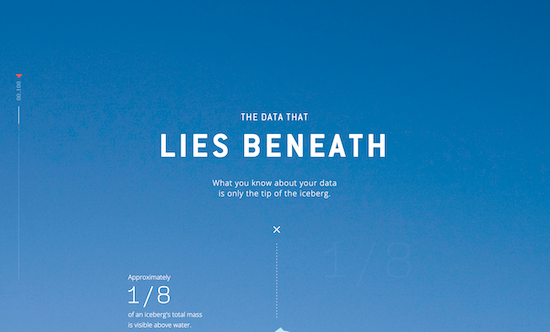
With an absolutely gorgeous user interface that brings visitors into the depths of “dark data,” Lucidworks’ microsite provides insight into the scale and cost of lost data.
With a visual journey through how data is generated, travels, and is analyzed, users learn that a lot of unused data is created every day and left unsecure. Incredibly informative and visually compelling, the site keys visitors in to Lucidworks’ mission to make dark data useful and kept out of the wrong hands.
7. Halsey: Manic The Album
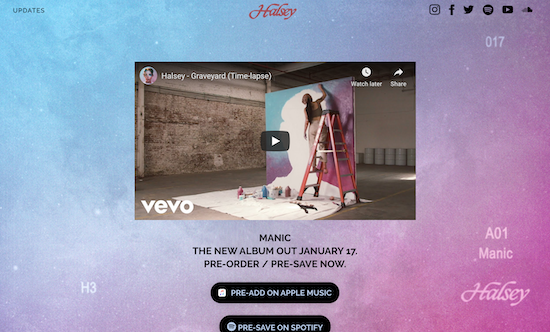
To emphasize the point that microsites can be used in every industry, we can look at how musical artist Halsey’s marketing team has leveraged her own for her upcoming album and tour.
The site features her latest music video and tour dates, and it allows pre-sales of her new album, Manic. All of her socials are linked to the site, as well as a button that will take you to her official merch store.
This all seems pretty common for a musician, but what sets Halsey’s site apart is that she creates a new one for each new album she releases. They all have their own styles and brands, which matches her reputation of building stories and worlds around her albums.
It’s a pretty successful way to get fans the information and products they want quickly, with full immersion into each, individual album’s themes.
8. OfficeMax: ElfYourself
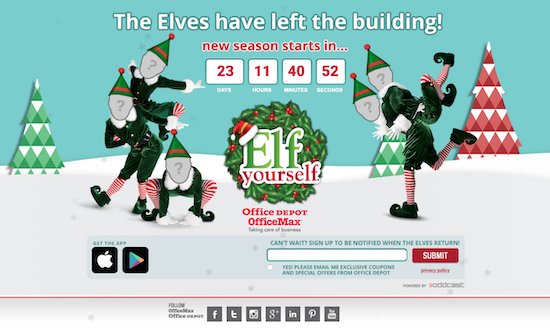
The screenshot may seem a little empty at the moment, but according to the counter from the time the photo was taken, in 23 days it will be the season of holiday cheer.
Which is another way of saying that your email inbox is going to be full of ElfYourself animations. It’s a popular activity, putting your face on a dancing Santa helper, that’s easily shareable and fun to make.
ElfYourself is a great example of a microsite meant to entertain loyal customers and generate brand trust and loyalty. Users are engaging with OfficeMax outside of transactions and sales, creating a positive familiarity.
And the coupons at the end of the videos are a nice touch.
9. American Cycling Association: CommUtah
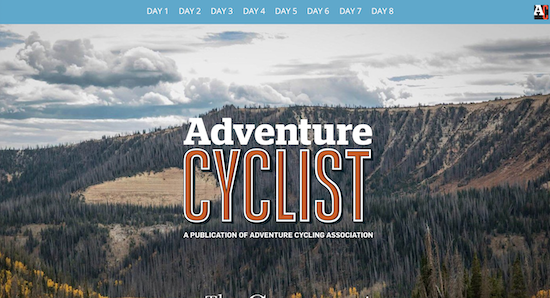
CommUtah is another purely informative microsite created to tell the story of a cycling group called “The Commute Crew” and their greatest challenge yet.
The site details their eight day journey across 421 miles in the state of Utah, taking you day by day through the struggle. It’s a pretty neat read, as you find out how much they accomplished, the terrain they cycled across, and complications along the way.
It’s a bit of a niche subject, but that’s what microsites are for. For any cycling enthusiasts out there, this is a pretty inspirational find.
10. NASA: NASA Spacecrafts
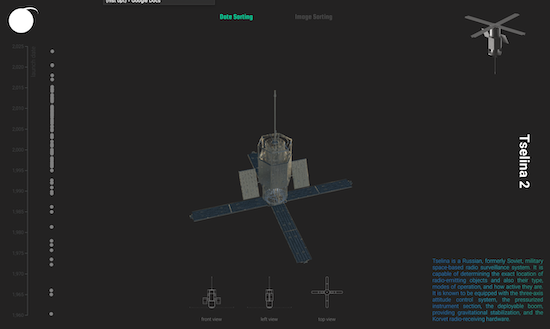
Definitely the coolest to make this list, NASA Spacecrafts gives you a complete, interactive list of every spacecraft and satellite ever launched by NASA. Let’s pause a second to let all the space nerds (me included) freak out for a second.
You can arrange the spacecrafts by date or image and receive information on their purpose and history. With 3D modelling, you can examine each craft’s blueprints from top to bottom.
NASA has been taking great efforts into making their research accessible to the public. This just happens to be one of the more geek out-worthy.
Is a Microsite Right for You?
If you’ve got some unique campaigns planned, a new product launching soon, or even just a cool story to tell, there’s definitely some value in launching a unique microsite. But it really is okay if you don’t. They’re never necessary.
Ultimately, you’ll need to ensure a microsite makes sense for your goals and budget.



Micah Lally
I’m a Content Writer at Bluleadz. I’m a big fan of books, movies, music, video games, and the ocean. It sounds impossible to do all of those at the same time, but you’d be surprised by the things I can accomplish.